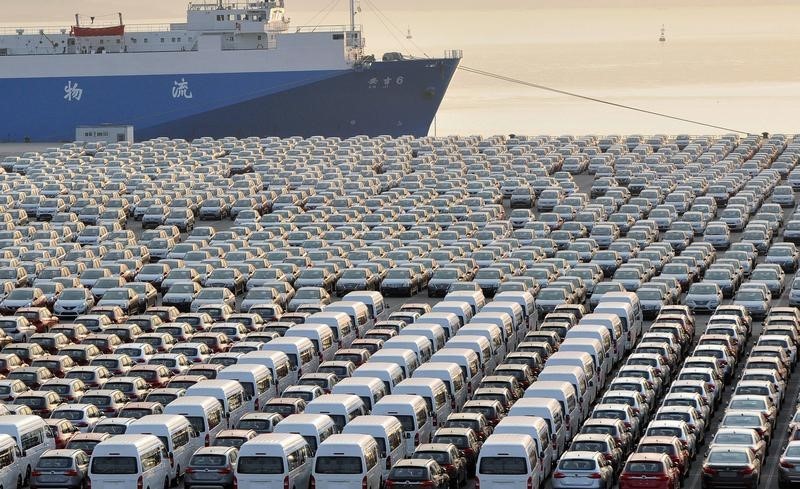How are energy investors positioned?
Investing.com -- China’s trade surplus unexpectedly fell to a one-year low in May, data showed on Wednesday, hit chiefly by a sharp drop in exports, although a smaller-than-expected drop in imports pointed to some improvement in local demand.
China’s trade balance fell to a surplus of $65.8 billion in May - its lowest level since a COVID-drive decline in April 2022, data from the Customs Administration showed.
The print was lower than expectations for a surplus of $71.6B, and fell from the prior month’s reading of $90.2B.
The unexpected drop in the trade surplus was largely driven by a bigger-than-expected, 7.5% decline in exports in May from the same period last year. The figure missed expectations for a reading of 8%, and reversed an 8.5% rise in exports seen through April.
The reading highlights the growing headwinds faced by the Chinese economy this year, as it grapples with weak overseas demand for locally produced goods. Chinese manufacturing activity - a bellwether of local economic activity - also struggled through May as foreign demand remained languid.
Exports had risen for the past three months as local manufacturers raced to meet pending orders after the country relaxed anti-COVID restrictions earlier this year. But with that backlog cleared, Chinese firms are facing a dearth of new orders.
Slowing economic growth in Europe and the U.S. is expected to keep Chinese exports depressed this year, as both regions, which are major consumers of Chinese goods, grapple with high inflation and interest rates.
Still, Chinese demand somewhat improved as manufacturers moved to increase their raw material inventories, on the hopes that conditions will improve in the coming months.
China’s imports fell 4.5% in May, lesser than expectations for a decline of 8% and the prior month’s fall of 7.9%.
Both imports and exports fell even as a string of COVID lockdowns provided a low base for comparison in the prior year.
Demand for services has remained robust in the country, driving a stronger-than-expected first quarter GDP reading this year. But factory activity has continued to lag, raising questions over just how sustainable an economic rebound in the country will remain this year.
